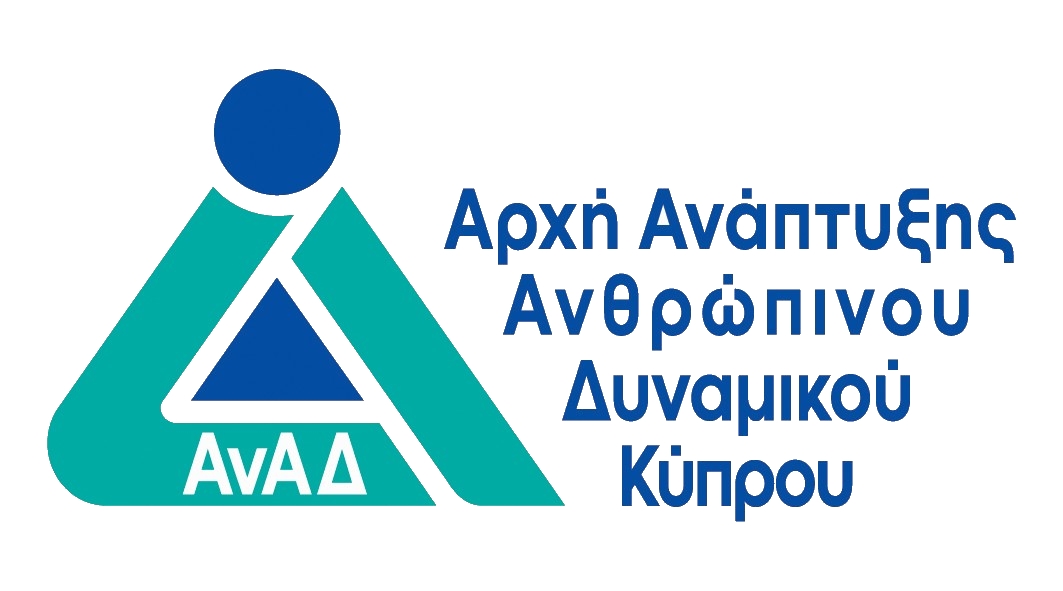
COMPTIA Network+
- Πληροφορική - Επαγγελματίες IT

ΠΕΡΙΓΡΑΦΗ
CompTIA Network+ is the first certification IT professionals specializing in network administration and support should earn. Network+ is aimed at IT professionals with job roles such as network administrator, network installer.
The CompTIA® Network+® (Exam N10-07) course builds on the existing user-level knowledge and experience with personal computer operating systems and networks to present the fundamental skills and concepts that a network administrator will need to use on the job in any type of networking career. For someone pursuing a CompTIA technical certification path, the CompTIA® A+® certification is an excellent first step to take before preparing for the CompTIA Network+ certification.
The CompTIA® Network+® (Exam N10-007) course can benefit participants in two ways. It can assist then if they are preparing to take the CompTIA Network+ examination. Also, if their job duties include network troubleshooting, installation, or maintenance, or if they are preparing for any type of network-related career, it provides the background knowledge and skills they require to be successful.
ΣΚΟΠΟΣ ΣΕΜΙΝΑΡΙΟΥ
Upon completion of this course the participants will be able to :
- Identify basic network theory concepts and major network communications methods.
- Describe bounded network media.
- Identify unbounded network media.
- Identify the major types of network implementations.
- Identify TCP/IP addressing and data delivery methods.
- Identify the major services deployed on TCP/IP networks.
- Identify the infrastructure of a WAN implementation.
- Identify the components used in cloud computing and virtualization.
- Describe basic concepts related to network security.
- Identify the components of a remote network implementation.
- Identify the tools, methods, and techniques used in managing a network.
- Describe troubleshooting of issues on a network.
- Implement routing technologies.
- Prevent security breaches.
- Respond to security incidents
- Adopt best practices for administering networks in LAN and WAN topologies
ΣΕ ΠΟΙΟΥΣ ΑΠΕΥΘΥΝΕΤΑΙ
Network+ is aimed at IT professionals with job roles such as network administrator, network technician, network installer
ΠΕΡΙΣΣΟΤΕΡΕΣ ΠΛΗΡΟΦΟΡΙΕΣ
Topics
Module 1 / Local Area Networks
Topologies and the OSI Model • Key Features of Networks • Network Topologies • The OSI Model • Physical Layer • Data Link Layer • Network Layer • Transport Layer • Upper Layers • OSI Model Summary • Labs • VM Orientation
Ethernet • Transmission Media • Media Access Control • Broadcast Domains • Ethernet Frames • Ethernet Deployment Standards • MAC Addressing • Address Resolution Protocol (ARP) • Packet Sniffers • Labs • Configuring Ethernet Networking
Hubs, Bridges, and Switches • Hubs and Bridges • Switches • Switch Interface Configuration • Spanning Tree Protocol (STP) • Power over Ethernet (PoE)
Infrastructure and Design • Network Infrastructure Implementations • Planning an Enterprise Campus Network • Network Hierarchy and Distributed Switching • Software Defined Networking • Planning a SOHO Network • TCP/IP Protocol Suite
Policies and Best Practices • Procedures and Standards • Safety Procedures • Incident Response Policies • Security and Data Policies • Password Policy • Employee Policies
Module 2 / IP Addressing
Internet Protocol • IPv4 • IPv4 Address Structure • Subnet Masks • IP Routing Basics • ipconfig / ifconfig • ICMP and ping • Labs • Configuring IPv4 Networking
IPv4 Addressing • IPv4 Addressing Schemes • Classful Addressing • Public versus Private Addressing • Subnetting and Classless Addressing • Planning an IPv4 Addressing Scheme • Public Internet Addressing • Variable Length Subnet Masks (VLSM) • Labs • Configuring IPv4 Subnets
IPv6 Addressing • IPv6 Address Format • IPv6 Addressing Schemes • IPv6 Address Autoconfiguration • Migrating to IPv6 • Labs • Configuring IPv6 Networking
DHCP and APIPA • IPv4 Address Autoconfiguration • Configuring DHCP • DHCPv6 • Labs • Configuring Address Autoconfiguration
Module 3 / Internetworking
Routing • Routing Basics • Routing Algorithms and Metrics • Dynamic Routing Protocols • Administrative Distance and Route Redistribution • IPv4 and IPv6 Internet Routing • High Availability Routing • Installing and Configuring Routers • Routing Troubleshooting Tools • Labs • Configuring Routing
TCP and UDP • Transmission Control Protocol (TCP) • User Datagram Protocol (UDP) • TCP and UDP Ports • Port Scanners • Protocol Analyzers • Labs • TCP and Port Scanning
Name Resolution and IPAM • Host Names and FQDNs • Domain Name System • Configuring DNS Servers • Resource Records • Name Resolution Tools • IP Address Management (IPAM) • Labs • Configuring Name Resolution and IPAM
Monitoring and Scanning • Performance Monitoring • Network Monitoring Utilities • Logs and Event Management • Simple Network Management Protocol • Analyzing Performance Metrics • Patch Management • Vulnerability Scanning • Labs • Performance Testing and Monitoring
Network Troubleshooting • Troubleshooting Procedures • Identifying the Problem • Establishing a Probable Cause • Establishing a Plan of Action • Troubleshooting Hardware Failure Issues • Troubleshooting Addressing Issues • Troubleshooting DHCP Issues • Troubleshooting Name Resolution • Troubleshooting Services
Module 4 / Applications and Security
Applications and Services • TCP/IP Services • HTTP and Web Servers • SSL / TLS and HTTPS • Email (SMTP / POP / IMAP) • Voice Services (VoIP and VTC) • Real-time Services Protocols • Quality of Service • Traffic Shaping • Bottlenecks and Load Balancing • Multilayer Switches • Labs • Configuring Application Protocols
Virtualization, SAN, and Cloud Services • Virtualization Technologies • Network Storage Types • Fibre Channel and InfiniBand • iSCSI • Cloud Computing • Configuring Cloud Connectivity
Network Security Design • Security Basics • Common Networking Attacks • Network Segmentation and DMZ • Virtual LANs (VLAN) • VLAN Trunks • Network Address Translation (NAT) • Device and Service Hardening • Honeypots and Penetration Tests
Network Security Appliances • Basic Firewalls • Stateful Firewalls • Deploying a Firewall • Configuring a Firewall • Deploying a Proxy • Intrusion Detection Systems (IDS) • Denial of Service • Labs • Configuring a NAT Firewall
Authentication and Endpoint Security • Authentication and Access Controls • Social Engineering • Authentication Technologies • PKI and Digital Certificates • Local Authentication • RADIUS and TACACS+ • Directory Services • Endpoint Security • Network Access Control • Labs • Secure Appliance Administration
Module 5 / Operations and Infrastructure
Network Site Management • Network Cabling Solutions • Distribution Frames • Change and Configuration Management • Network Documentation and Diagrams • Labeling • Physical Security Devices • Business Continuity and Disaster Recovery • Network Link Management • Power Management • Backup Management • Labs • Network Inventory Management
Installing Cabled Networks • Twisted Pair Cable (UTP / STP / ScTP) • Twisted Pair Connectors • Wiring Tools and Techniques • Cable Testing Tools • Troubleshooting Wired Connectivity • Other Copper Cable Types • Fiber Optic Cable and Connectors • Transceivers and Media Converters
Installing Wireless Networks • Wireless Standards (IEEE 802.11) • Wireless Network Topologies • Wireless Site Design • Troubleshooting Wireless Connectivity • Wireless Security • Wi-Fi Authentication • Extensible Authentication Protocol • Troubleshooting Wireless Security • Wireless Controllers
Installing WAN Links • Wide Area Networks (WAN) • Telecommunications Networks • Modern Telecommunications Networks • Local Loop Services • Installing WAN Links • Wireless WAN Services • Internet of Things
Configuring Remote Access • Remote Access Services (RAS) • MPLS and PPP • SIP Trunks • Virtual Private Networks (VPN) • SSL / TLS / DTLS VPNs • IPsec • Internet Key Exchange / ISAKMP • Remote Access Servers • Remote Administration Tools • Managing Network Appliances • Remote File Access • Labs • Configuring Secure Access Channels • Configuring a Virtual Private Network
Πληροφορίες Εκπαιδευτή
Αναλυτικό Κόστος Σεμιναρίου
Για Δικαιούχους ΑνΑΔ
- € 1050.00
- € 700.00
- € 0.00
- € 350.00
- € 350.00
Για μη-Δικαιούχους ΑνΑΔ
- € 1050.00
- € 0.00
- € 199.50
- € 1050.00
- € 1,249.50
 Ελληνικά
Ελληνικά  English
English



 Ελληνικά
Ελληνικά
 35 ώρες
(
10 μέρες
)
35 ώρες
(
10 μέρες
)

